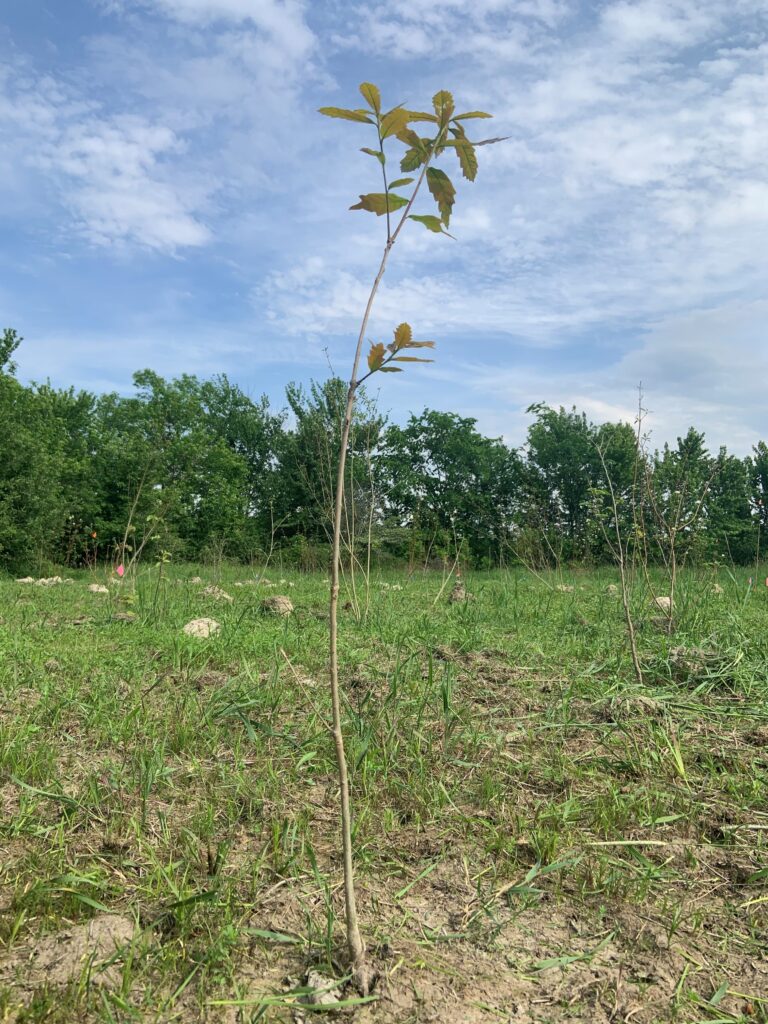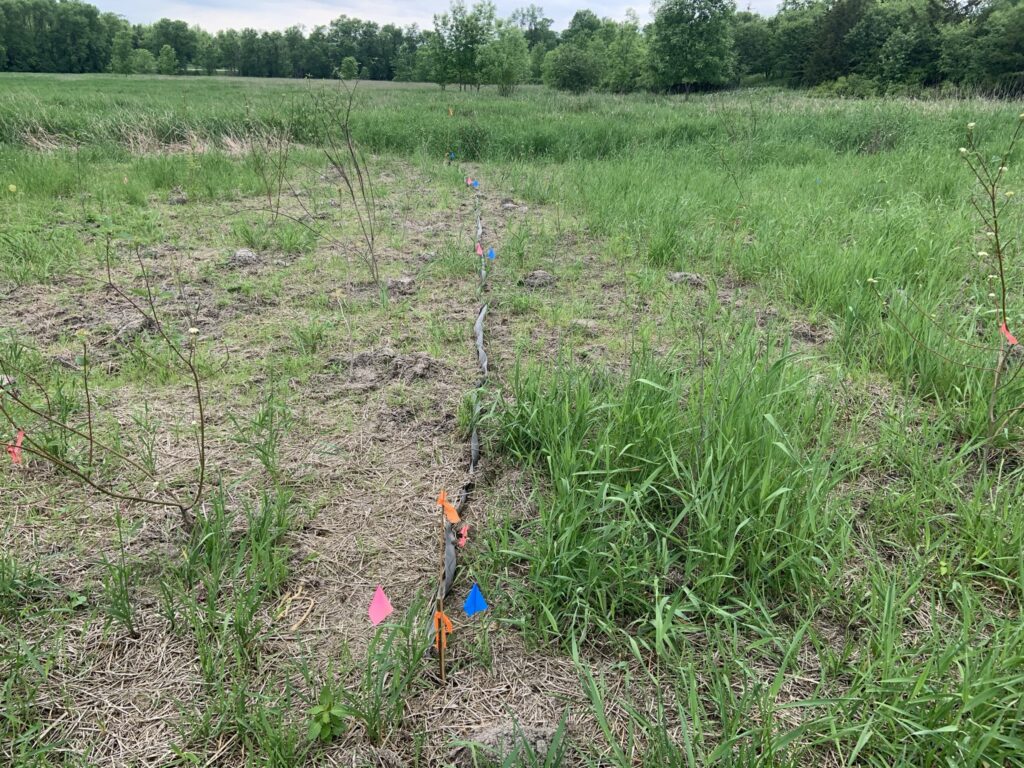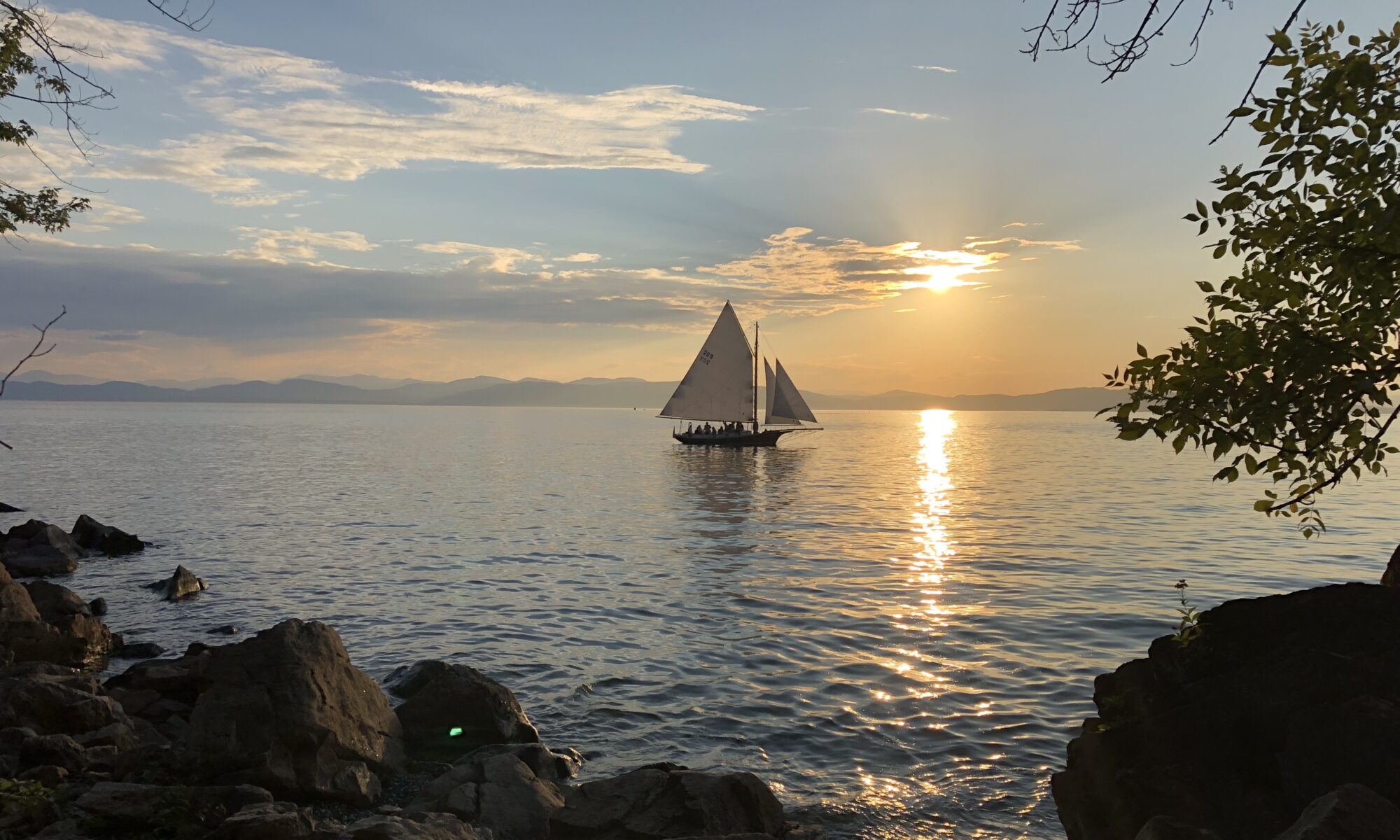By Stever Bartlett. MS Candidate Aquatic Ecology and Watershed Science

The clayplain forests of the Lake Champlain Basin prior to colonization were expansive in acreage and extensive in the ecological services they provided. Restoring functioning clayplain forests in and around current wetlands, shorelines and river riparian areas is a long sought after goal. In an effort to reach that goal, my research (in addition to other research) is happening in the Lake Champlain Basin to determine best management practices for planting trees in riparian areas that are dominated by reed canary grass (Phalaris arundinacea). The project is funded by a Pollution Prevention and Habitat Conservation grant from the Lake Champlain Basin Program. It is the first applied research project of the new Watershed Forestry Partnership, a collaboration of UVM Extension, Lake Champlain Sea Grant and various partnering organizations.
My research, intended to learn how best to control reed canary grass, includes planting adjacent treatment (herbicide-free management techniques) and control (i.e., standard herbicide management techniques) plots of native tree stems at eight Lake Champlain Basin sites in Addison County, and assess survival overtime. The sites are located in the Vermont Fish and Wildlife Department’s Dead Creek, Lemon Fair, Little Otter Creek, Lower Otter Creek and Whitney/Hospital Creek Wildlife Management Areas.
A common and current standard treatment in the Lake Champlain basin of Vermont is the application of glyphosate as a primary management practice to control reed canary grass. Herbicide-free management techniques have been studied with varying results, including tilling and mowing methods. The herbicide-free management technique in my study incorporates tilling the treatment plot prior to planting, and mowing sites at set intervals during the first two years of growth. I completed the tilling and preparation of the plots in the late summer and early fall of 2020. The planting of 1,440 tree stems occurred with the help of volunteers in April and early May of 2021, across the eight sites. Each site was planted with 90 stems in the control plot and 90 stems in the treatment plot. Tree stems ranged in height from 3-5ft and included species native to Lake Champlain Basin floodplains. Some of the species planted were swamp white oak (Quercus bicolor), burr oak (Quercus macrocarpa), grey dogwood (Cornus racemose), red osier dogwood (Cornus sericea), red maple (Acer rubra), silver maple (Acer saccharinum), nannyberry (Viburnum lentago), Arrowhead (Viburnum dentatum) and american basswood (Tilia Americana). Rain and wet soils made the planting muddy and messy, but otherwise conducive to helping the stems live and become established.


In the first week of June, July, August and September (2021), I collected data at each site and performed the plot maintenance in the form of manual weed control (weed eating). Counting live and dead stems as a part of the monthly data collection indicated the planting was successful with only a handful of stems showing catastrophic demise. Other data collected was a soil sample from each site, and an estimate of percent cover of reed canary grass in the control and treatment plots using a 1m x 1m quadrat. I observed that reed canary grass growth was depressed as expected. The surprise was the invasion of other weed and grass species, both native and non-native.
I will collect data and engage in plot maintenance another four times in the summer of 2022. In the fall of 2022, after the data compilation and analysis is wrapped up, I will prepare a scientific paper and the results of the project will be shared with the scientific community and stakeholders, to provide data based information for landowners and practitioners to use when deciding what management methods to use for future riparian buffer planting projects.
